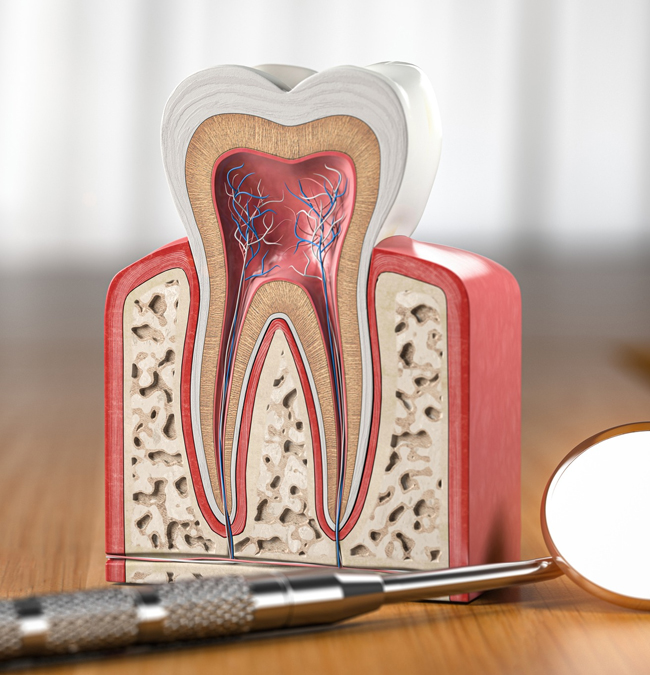Root Canals

The Importance of Performing a Root Canal
Our teeth consist of three main layers: dental enamel, dentin, and pulp. Enamel is the hard, outer layer, dentin is the softer layer beneath it, and the pulp, located under the dentin, contains connective tissue, nerves, and blood vessels.
Typically, the pulp is well-protected by the enamel and dentin. However, if bacteria penetrate through a deep cavity, fracture, or trauma, an infection can develop.
An infected tooth often causes significant pain, which will worsen if left untreated. While tooth extraction is an option, it is always our last resort.
Missing teeth can lead to problems such as bone loss and shifting of adjacent teeth. Root canal treatment addresses the infection, preserves the natural tooth, and restores oral health. It generally involves less discomfort and a shorter recovery time compared to tooth extraction.
Possible signs for root canal treatment
- Severe toothache
- Jaw discomfort or swelling
- Intense tooth sensitivity
- Gum bump resembling a pimple
- Puffy, red, or swollen gums
- Possible bad taste or odor in the mouth
During a root canal, what occurs?
Many patients feel anxious about root canals, but there's no need to worry—it's not a frightening procedure. Our dentists use advanced 3-D cone-beam (CBCT) imaging to meticulously plan your treatment, providing a detailed three-dimensional view of the tooth.
This 3-D imaging allows our dentists to precisely evaluate the tooth's anatomy and customize the procedure to your needs. Combined with effective anesthesia, this technology enhances your comfort and improves the overall results. Most patients experience significant relief right after the procedure.
We guarantee your comfort.
If you experience dental anxiety, we have the perfect solution to help you feel at ease. We offer oral sedation to keep you relaxed during your procedure. To further enhance your comfort, we provide neck pillows, blankets, and TVs in our treatment rooms.
Before we begin, our dentist will apply a strong local anesthetic to numb the tooth, ensuring you won't feel any pain during the treatment. If you arrived with discomfort, you'll appreciate the immediate relief as the anesthesia takes effect!